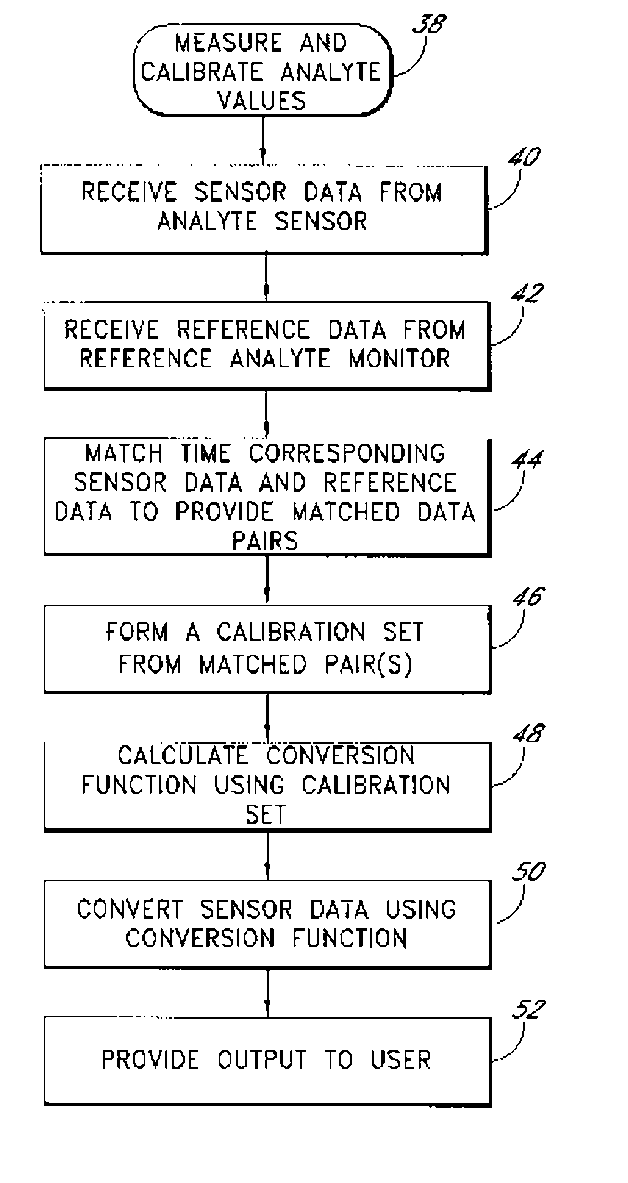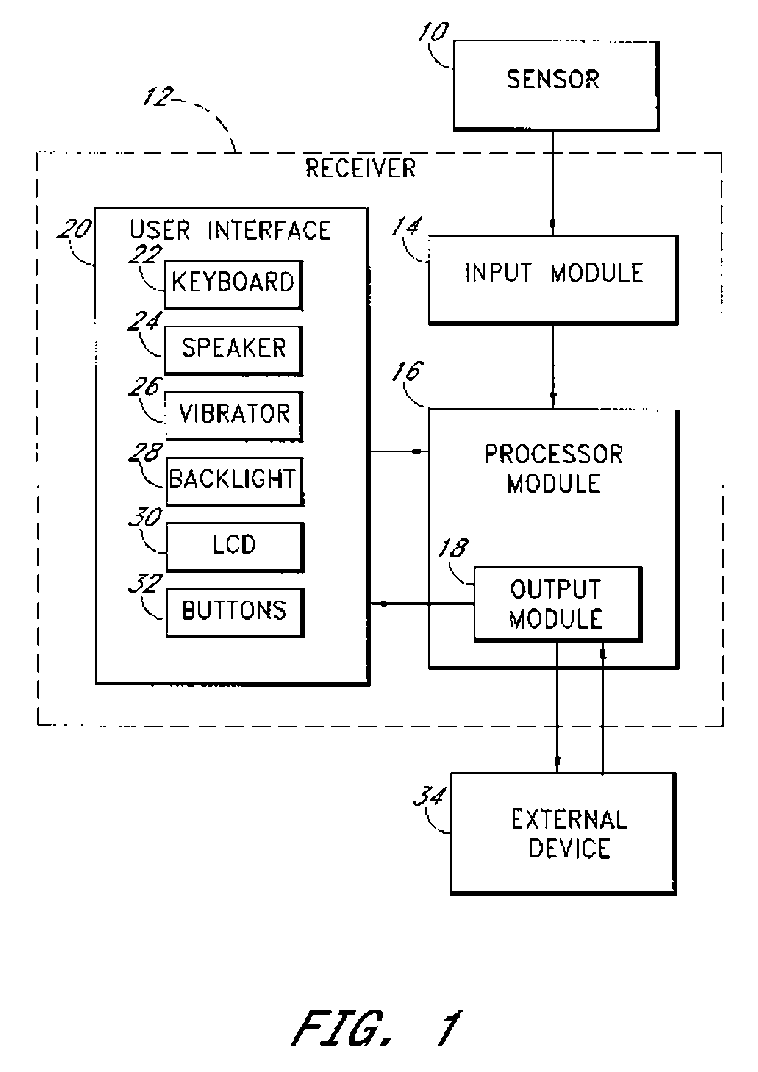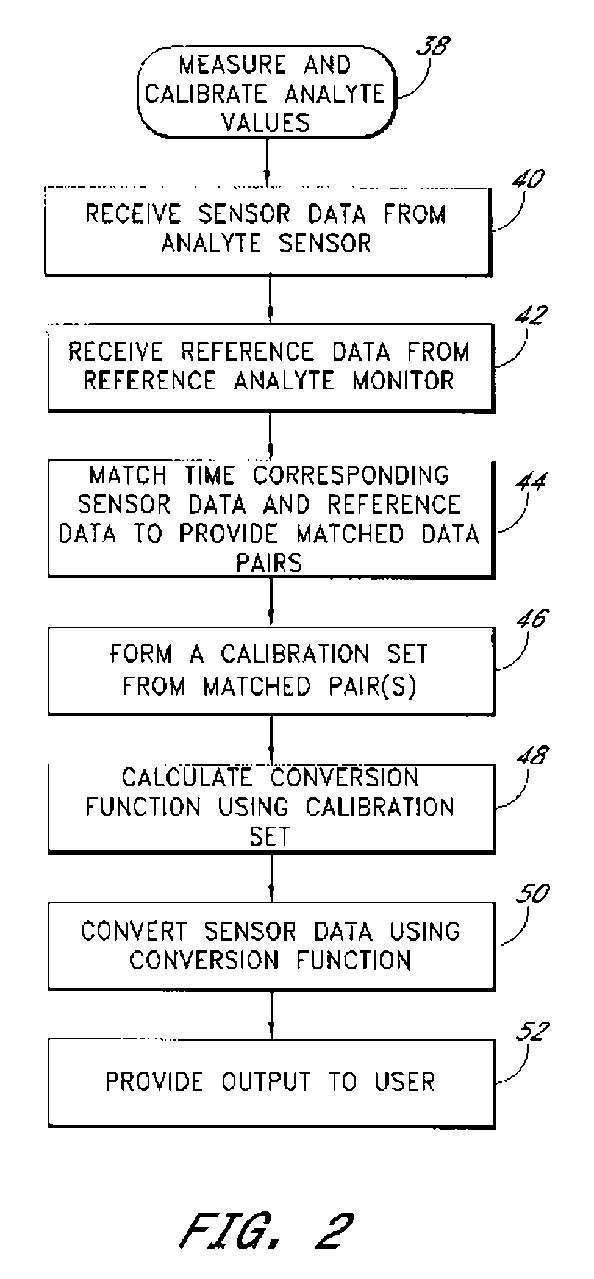Signal processing for continuous analyte sensor
signal processing technology, applied in the field of system and method for measuring and analyzing data obtained from a continuous analyte sensor, can solve the problems of inability of patients to make educated insulin therapy decisions, inability to accurately analyze the data output of the continuous glucose sensor, and inability to accurately determine the effect of insulin resistan
- Summary
- Abstract
- Description
- Claims
- Application Information
AI Technical Summary
Benefits of technology
Problems solved by technology
Method used
Image
Examples
first embodiment
[0007] Accordingly, in a first embodiment, a method for estimating an analyte value from a continuous analyte sensor is provided, the method comprising receiving a data stream from the continuous analyte sensor for a first time period, thereby obtaining a measured analyte value; estimating at least one analyte value for a second time period based on the data stream; and comparing the estimated analyte value with the measured analyte value.
[0008] In an aspect of the first embodiment, the step of receiving a data stream comprises receiving a data stream that has been algorithmically smoothed.
[0009] In an aspect of the first embodiment, the step of receiving the data stream comprises receiving a raw data stream.
[0010] In an aspect of the first embodiment, the step of estimating at least one analyte value further comprises selecting an algorithm from a plurality of algorithms based on an analysis of the data stream prior to estimating at least one analyte value.
[0011] In an aspect of th...
second embodiment
[0053] In a second embodiment, a method for estimating an analyte value from a continuous analyte sensor is provided, the method comprising receiving a data stream from the continuous analyte sensor for a time period; estimating at least one analyte value for a future time based on the data stream; analyzing a variation of the estimated analyte value based on a parameter selected from the group consisting of a statistical parameter, a clinical parameter, or a physiological parameter; and providing an output based on the estimated analyte value and the variation of the estimated analyte value.
[0054] In an aspect of the second embodiment, the method further comprises evaluating the selected algorithm by applying an evaluation function prior to employing the selected algorithm to estimate the analyte value, wherein the evaluation function is selected from the group consisting of a data association function, a curvature formula, and a physiological boundary.
third embodiment
[0055] In a third embodiment, a method for estimating an analyte value from a continuous analyte sensor is provided, the method comprising receiving a data stream from the continuous analyte sensor for a time period; selecting at least one algorithm from a plurality of algorithms based on an analysis of the data stream; evaluating the algorithm based on at least one parameter selected from the group consisting of a statistical parameter, a physiological parameter, and a clinical parameter; and employing the selected algorithm based on the step of evaluating to estimate at least one analyte value.
[0056] In an aspect of the third embodiment, the method further comprises evaluating the selected algorithm by applying an evaluation function prior to employing the selected algorithm to estimate the analyte value, wherein the evaluation function is selected from the group consisting of a data association function, a curvature formula, and a physiological boundary.
[0057] In an aspect of the...
PUM
| Property | Measurement | Unit |
|---|---|---|
| concentration | aaaaa | aaaaa |
| time | aaaaa | aaaaa |
| time | aaaaa | aaaaa |
Abstract
Description
Claims
Application Information
 Login to View More
Login to View More - R&D
- Intellectual Property
- Life Sciences
- Materials
- Tech Scout
- Unparalleled Data Quality
- Higher Quality Content
- 60% Fewer Hallucinations
Browse by: Latest US Patents, China's latest patents, Technical Efficacy Thesaurus, Application Domain, Technology Topic, Popular Technical Reports.
© 2025 PatSnap. All rights reserved.Legal|Privacy policy|Modern Slavery Act Transparency Statement|Sitemap|About US| Contact US: help@patsnap.com



